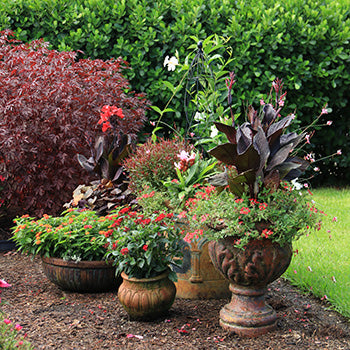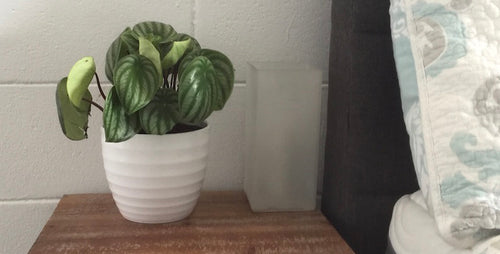By Karen Weir-Jimerson
A plant that lives on air? How easy is that? Airplants are spidery little beauties that are ideal for home decorators and plant collectors. Here are 11 surprising things you may not know about these carefree plants.

1. Yo, Bro(meliad) Airplants are related to bromeliads, the spiky-flowered tropical plant. In fact, air plants are considered bromeliads (but not all bromeliads are airplants). Like bromeliads, airplants come in different sizes, colors, and shapes.
2. Rebel Without Some Soil Airplants are rule breakers: Unlike other plants, they don’t grow in soil. In nature, airplants use their roots to set up housekeeping anywhere, grabbing onto tree branches or rocks. But they are also happy sitting in a glass globe, on top of sand in a dish, or propped on the top of a little vase.
3. All I Need is The Air That I Breathe Remember the Hollies hit in the summer of 1974 “The Air that I Breathe”? (If not, ask your parents…) This song could have been written about airplants. Plants that live on air are called epiphytes. Absorption of nutrients occurs through the small scales on their leaves.
4. Bring on the Breeze Because airplants feed off the air, it only makes sense that they like lots of circulating air—sort of a fly-by smorgasbord. Airplants won’t live in an entirely enclosed container, such as a sealed jar.

5. Turn on the Lights Airplants like it bright! Position your plants in a south, east or west window. They also do well under fluorescent lights.
6. Put Me Outside Airplants love a vacation and a little stint on a front or back porch or screened room will suit them well. Just make sure they are not exposed to full direct sunlight all day. In the wild airplants are found in many different ecosystems: jungles, deserts, and rain forests.
7. Dip and Dunk Like dunking a donut into coffee: that’s how you water an airplant. Just immerse the whole plant in a bowl of water. Then shake out the airplants so no water pools in leaf recesses. Dunk a couple times a week to refresh your airplant. You can also water by misting your air plant once a week or two.
8. Serve up Snacks Although you don’t need to feed your airplant (because it can live off nutrients gleaned from water and air), you can improve the growth of your plant by giving it a snack. Look for food formulated for airplants or bromeliads.
9. Look Smart Go ahead and groom your airplant. If leaves are dried or brown, clip them off the plant.
10. Watch for Blooms! As if airplant foliage isn’t cool on its own, these little plants will occasionally bloom in a host of colors. Flowers appear in spring and summer.
11. Call Me Mommy Airplants can have babies! Called pups, these baby tillandsias grow around the base of the mother plant. Once they are about the same size as the mother, you can pluck them off and place them in other containers.

















